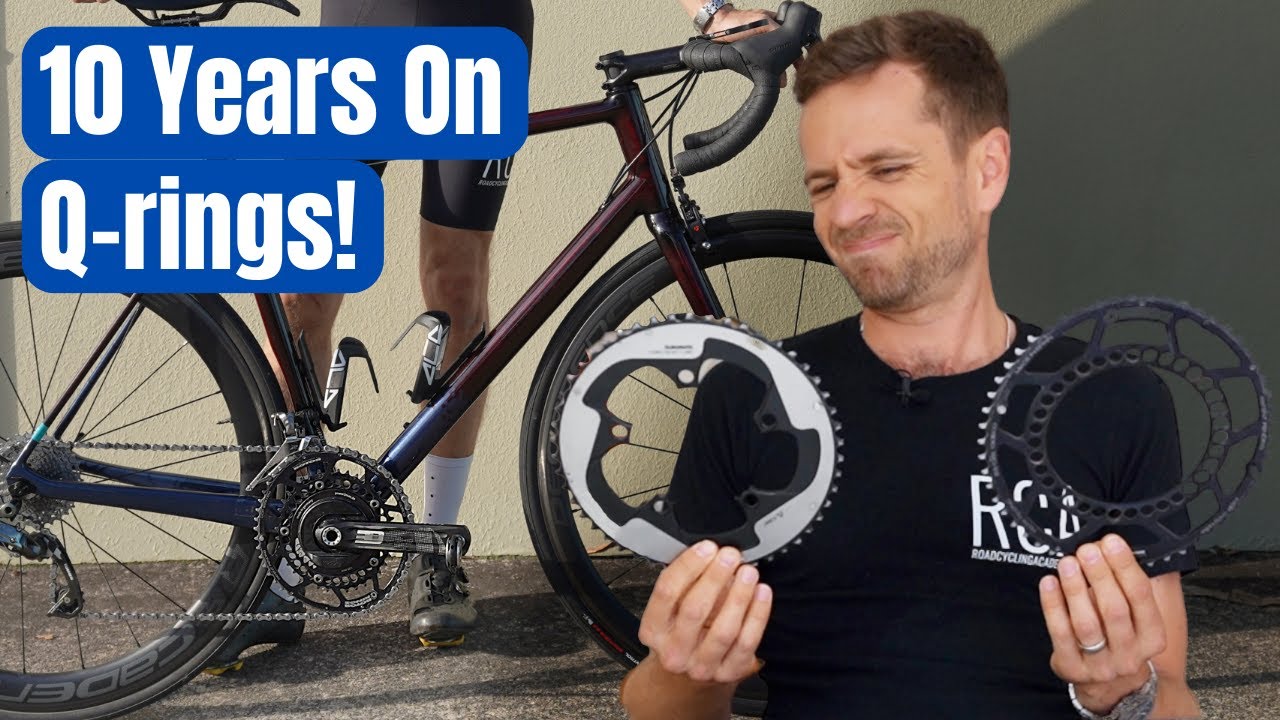Do Oval Chainrings Improve Performance? (Bike Fitter explains) with Road Cycling Academy
Source: Road Cycling Academy Youtube Channel: Do Oval Chainrings Improve Performance? (Bike Fitter explains)
Video Do Oval Chainrings Improve Performance? (Bike Fitter explains) with Road Cycling Academy
Video Do Oval Chainrings Improve Performance? (Bike Fitter explains) with Road Cycling Academy YouTube Channel.
Do Oval Chainrings Improve Performance? (Bike Fitter explains)
**Maximizing Cycling Performance with Oval Chain Rings**
—
**Introduction to Oval Chain Rings**
When it comes to optimizing road cycling performance, there are various components and accessories that can make a difference in a rider’s experience and output. One such component is the oval chain ring, also known as a Q-ring. This unique type of chain ring has gained attention for its potential to enhance power transfer and pedal stroke efficiency. As such, this article will delve into the mechanics, benefits, drawbacks, and real-world experiences of using oval chain rings, shedding light on their impact on road cycling performance.
—
**Understanding Oval Chain Rings**
Oval chain rings are not a new concept in the cycling world, however, their technical aspects and functionality are often a point of curiosity and confusion for many riders. Also referred to as elliptical chain rings, these uniquely shaped rings are designed to change their effective circumference dynamically as a rider pedals. At the top of the pedal stroke, the oval chain ring offers a smaller circumference, which progressively increases to a larger circumference on the downstroke, and then returns to a smaller circumference. The goal of this design is to provide a more consistent power application throughout the pedal stroke, reducing dead zones and allowing for a more efficient transfer of energy. This unique design is said to help in leveraging more power from the rider’s stroke and potentially increasing overall efficiency.
—
**Real-world Experience with Oval Chain Rings**
While the fundamental theory behind oval chain rings is intriguing, the real-world experience of cyclists using them provides deeper insight into their practical impact. Many cyclists report a noticeable adjustment period when transitioning to oval chain rings. Tim, an experienced cyclist, shared his experience using oval chain rings for a prolonged period and then transitioning back to traditional round ones. According to Tim, the initial discomfort and perception of a change in pedal stroke were significant. However, over time, he found that his body seemed to adapt to the oval rings, and the feeling of discomfort diminished. Additionally, the perceived differences in power output and efficiency were challenging to measure accurately, reflecting the complex nature of evaluating the impact of oval chain rings on cycling performance.
—
**Potential Benefits and Limitations**
Delving into the potential benefits and limitations of oval chain rings helps cyclists make informed decisions about incorporating this component into their cycling setup. The alleged benefits of employing oval chain rings in enhancing performance encompass a more efficient power delivery, reduced dead spots in the pedal stroke, and a potentially smoother, more consistent power output. However, the limitations also warrant attention. While some riders reported a substantial adaptation period to the oval rings, others did not experience significant perceived improvements in performance metrics such as power output, efficiency, or endurance. Furthermore, the difficultly of executing smooth gear shifts with oval chain rings adds another layer to the debate of their practicality and appeal. Overall, the nuanced experiences of cyclists underscore the need for a comprehensive understanding of the potential benefits and limitations of oval chain rings.
—
**Positional Adjustments and Ergonomic Considerations**
Another important aspect to consider when exploring the impact of oval chain rings on road cycling performance is their potential influence on a rider’s ergonomic positioning and comfort. It is suggested that the altered pedal stroke facilitated by oval chain rings may lead to a reduction in perceived weight on the rider’s hands, potentially resulting in a more comfortable and stable riding experience. However, the extent of these ergonomic changes remains a point of debate and may vary based on individual riding styles and preferences. When incorporating oval chain rings into one’s cycling setup, riders should evaluate potential adjustments to their saddle position and handlebar height, considering the possible changes in weight distribution and pedal stroke dynamics.
—
**The Role of Adaptation and Individual Biomechanics**
The overarching theme of adaptation resonates strongly with the use of oval chain rings in road cycling. Cyclists may grapple with the initial challenges and discomfort associated with the transition, potentially impacting their overall riding experience. Furthermore, the role of individual biomechanics and pedal stroke characteristics cannot be overstated. Riders with larger dead zones in their pedal stroke, particularly those who exhibit pronounced heel dropping, may be more likely to perceive the benefits of oval chain rings due to an enhanced relief of dead zones and more efficient power delivery. Acknowledging and understanding the interplay between individual biomechanics and the potential benefits of oval chain rings offers valuable insight into their relevance to different cyclists and riding styles.
—
**Conclusion: Navigating the Oval Chain Ring Journey**
In conclusion, the realm of oval chain rings presents a tapestry of complexities, ranging from theoretical performance benefits to real-world rider experiences. As cyclists explore the potential of this component on road cycling performance, it is crucial to consider the multifaceted aspects of adaptation, biomechanics, and practical implications. The journey of integrating oval chain rings into one’s cycling setup embodies a balance of potential benefits, limitations, and the dynamic interplay between the rider and their equipment. While the distinct advantages and challenges of oval chain rings merit attention, individual experiences and adaptation play pivotal roles in shaping the narrative of their impact on road cycling performance.
By capturing these multi-layered facets, cyclists can gain a deeper understanding of the role of oval chain rings and make informed decisions regarding their integration into their road cycling endeavors. Whether embraced for the pursuit of enhanced power delivery, efficiency gains, or as an avenue for exploring individual riding dynamics, oval chain rings represent a compelling element in the evolving landscape of road cycling performance optimization.
*With the intricacies of oval chain rings unfolding at the intersection of theory and practicality, cyclists embark on a journey marked by adaptation, exploration, and the unending pursuit of optimal riding dynamics.*
The opinions expressed in this space are the sole responsibility of the YouTube Channel Road Cycling Academy and do not necessarily represent the views of CicloNews.










